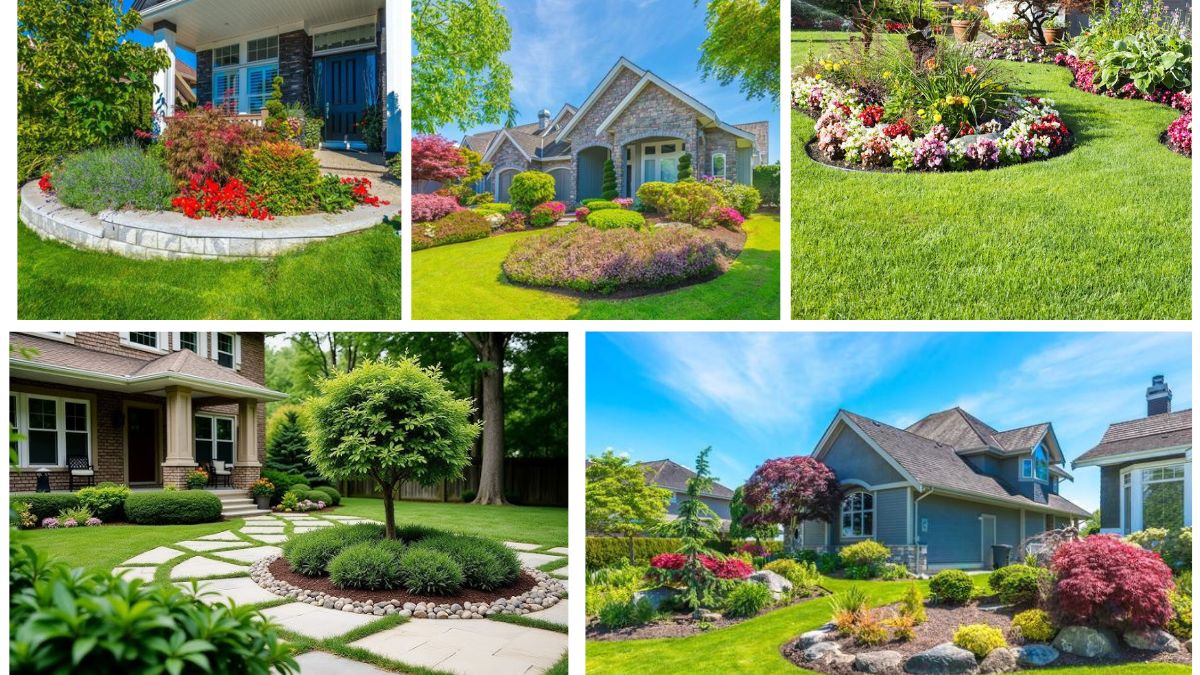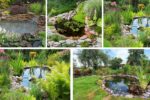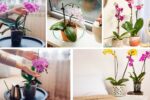A well-planned garden has the power to completely transform your outdoor space, and one of the most eye-catching features you can add is an island flower bed. Unlike traditional border beds that align with walls or fences, island flower beds stand alone in the open yard, creating a bold focal point that instantly enhances the overall appeal of your landscape. These freestanding beds allow creativity, as they can be designed in any shape, size, and style, offering endless opportunities for personalization.
In this article, we will explore five creative island flower bed designs that not only make your garden more attractive but also reflect your personality and creativity. Whether you prefer symmetrical elegance or whimsical arrangements, these ideas will help you craft a unique garden feature that will impress every guest and give your outdoor space a charming makeover.
1. Circular Island Flower Bed with a Statement Centerpiece
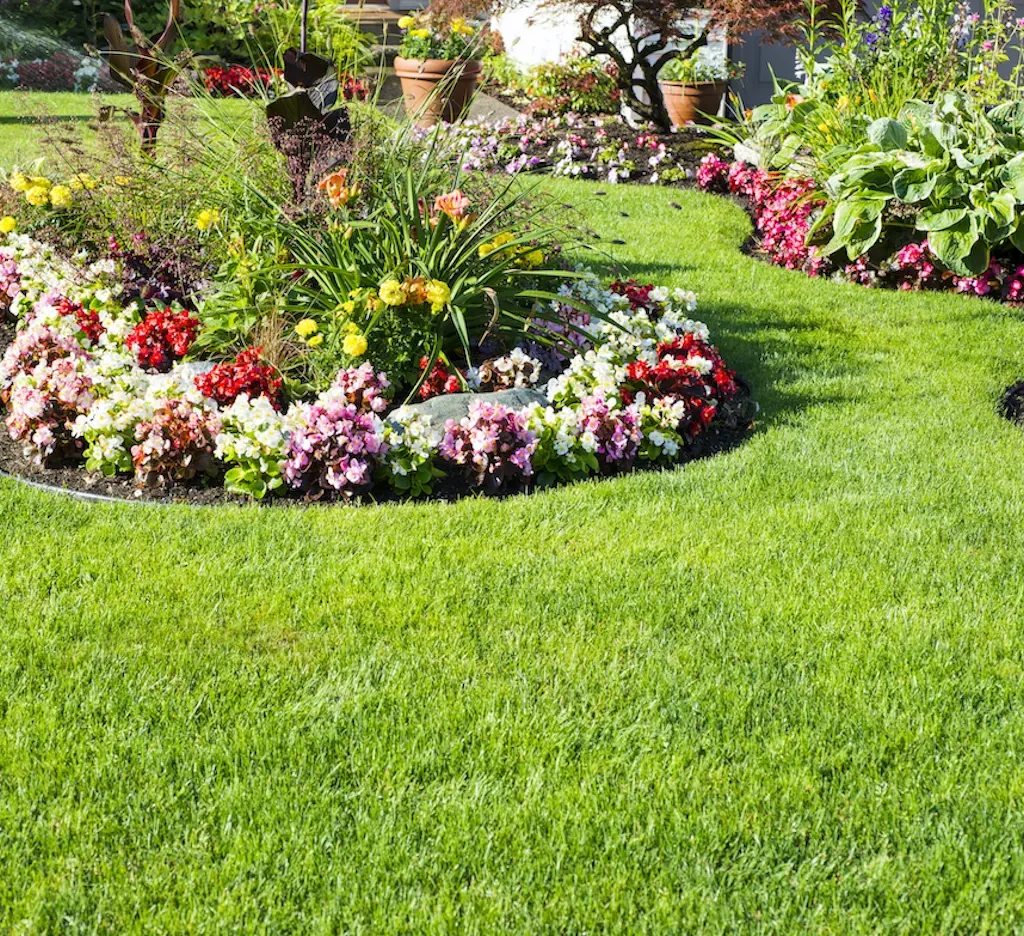
A circular island flower bed is one of the most timeless and versatile designs. Its rounded shape creates a natural flow that blends seamlessly into the lawn, while also serving as a central focal point. To make it stand out, add a striking centerpiece like a small ornamental tree, a birdbath, or even a decorative garden sculpture. Surround the centerpiece with layers of flowers in complementary colors for a lush, vibrant display.
For example, you might plant a dwarf Japanese maple or a standard rose tree in the center, then surround it with a ring of seasonal perennials such as marigolds, salvias, or petunias. Adding an outer ring of ground covers like creeping thyme or alyssum completes the layered look.
This type of island flower bed works best in open lawns where it can be admired from all sides. To enhance the design further, you can edge the circle with natural stones, bricks, or even low-growing plants to give it a polished finish.
2. Curved Island Flower Bed for a Natural Flow

If you prefer something less formal, a curved island flower bed is a fantastic choice. Unlike the perfect symmetry of a circle, curved beds create a relaxed, flowing appearance that looks organic and inviting. This design works especially well in larger yards where you want to break up open spaces and create soft visual interest.
To design a curved island bed, start with sweeping lines rather than sharp angles. Choose plants of varying heights and textures to give it depth and dimension. For instance, taller plants like ornamental grasses, hollyhocks, or sunflowers can be placed at the center or along the longer curves, while shorter plants like begonias, zinnias, or pansies can fill the edges.
Consider using a mix of evergreens and seasonal bloomers to keep your island bed attractive year-round. To further highlight the naturalistic design, use mulch or pebbles to create paths around the bed, making it both functional and aesthetically pleasing.
3. Elevated or Tiered Island Flower Bed

For gardeners who want to add more structure and drama to their landscape, an elevated or tiered island flower bed is a showstopper. By raising the bed above lawn level, you not only improve drainage but also create a dynamic focal point that instantly draws attention.
You can build elevation by using stacked stones, wooden sleepers, or even retaining blocks. Once you have your raised platform, arrange plants in tiers—taller shrubs or small trees at the back or center, medium-height flowers in the middle, and low-growing ground covers or border plants along the edges.
This layered effect creates a sense of depth and dimension, making the island bed look fuller and more vibrant. For instance, you could plant hydrangeas or dwarf conifers in the center, surround them with colorful perennials like lavender or echinacea, and finish the edges with cascading plants like creeping phlox or trailing lobelia.
Elevated beds also make maintenance easier since the height reduces the need for bending and kneeling—a practical yet beautiful solution for home gardeners.
4. Rock-Inspired Island Flower Bed

Nature lovers often prefer designs that feel organic and rustic, and a rock-inspired island flower bed is perfect for this. By incorporating natural stones, boulders, or gravel, you can create a landscape feature that looks like it belongs in the wild.
Start by choosing a mix of rocks in various sizes and shapes. Position large boulders strategically as focal points, then fill the gaps with flowering plants that thrive in rocky or well-drained soil conditions. Succulents, sedums, dianthus, and alpine plants are excellent choices for this type of design, as they complement the rugged, earthy appearance.
For added charm, you can also integrate a small water feature like a mini fountain or birdbath into the rock setting. The combination of rocks, flowing water, and colorful blooms will give your garden a serene, naturalistic appeal reminiscent of a mountain meadow or dry stream bed.
This design works especially well in sunny areas, as many rock garden plants are drought-tolerant and low-maintenance.
5. Mixed-Style Island Flower Bed with Seasonal Layers
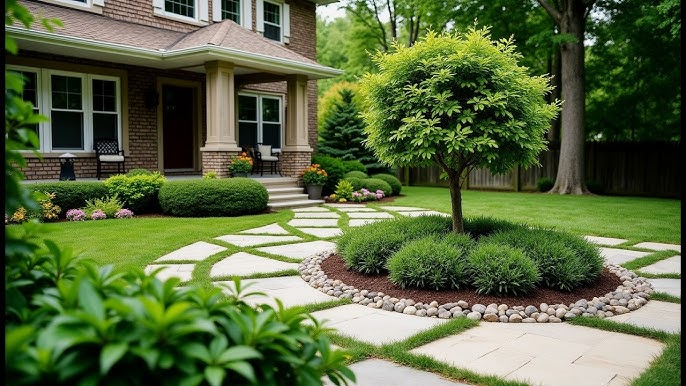
If you can’t decide on one specific style, why not combine elements from different designs to create a mixed-style island flower bed? This flexible approach allows you to experiment with colors, plant types, and seasonal layers to keep your garden dynamic throughout the year.
For example, you could design a loosely circular bed with curved edges, include a small elevated section in the center for visual interest, and border it with rocks or bricks for definition. Plant tall perennials like delphiniums or foxgloves in the back or center, mid-sized shrubs or roses in the middle, and low-spreading annuals along the edges.
The key to a successful mixed-style island bed is balance. Use color theory to combine complementary hues, and ensure that the plant heights gradually transition from tall to short. You can also rotate seasonal plants, such as tulips and daffodils in spring, zinnias and dahlias in summer, and chrysanthemums in autumn, to keep the bed looking fresh year-round.
This design is perfect for gardeners who enjoy experimenting and want their landscape to evolve with the seasons.
Tips for Designing and Maintaining Island Flower Beds
No matter which style you choose, here are a few essential tips for creating and maintaining stunning island flower beds:
- Choose the Right Location – Place your island bed in a spot where it will be visible from multiple angles, ideally in the middle of a lawn or an open space.
- Consider Sunlight and Soil – Select plants based on the sunlight conditions of the chosen spot (full sun, partial shade, or full shade).
- Use Mulch – Mulching helps retain soil moisture, prevents weeds, and adds a neat finish.
- Add Edging – Use stones, bricks, or metal edging to define the shape and prevent grass from encroaching.
- Plan for Growth – Remember that plants will spread over time, so allow enough space between them.
- Maintain Regularly – Water, prune, and fertilize as needed to keep your bed lush and healthy.
Conclusion
Island flower beds are a versatile and creative way to elevate your garden’s design. Whether you prefer the clean lines of a circular bed, the relaxed flow of a curved bed, the structure of a raised design, the rustic charm of a rock garden, or the flexibility of a mixed-style arrangement, there is an option that will suit your taste and landscape.
By carefully planning your layout, choosing the right plants, and maintaining the bed with care, you can create a stunning focal point that not only enhances your outdoor space but also brings joy and beauty year-round.
An island flower bed is more than just a garden feature—it’s a reflection of creativity, personality, and a love for nature. With these five designs, you have all the inspiration you need to start crafting a truly unique landscape.
